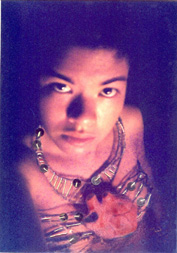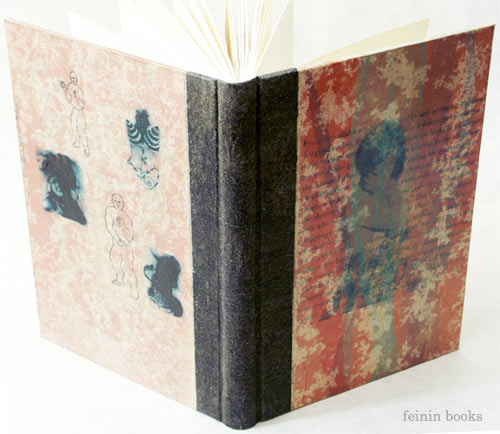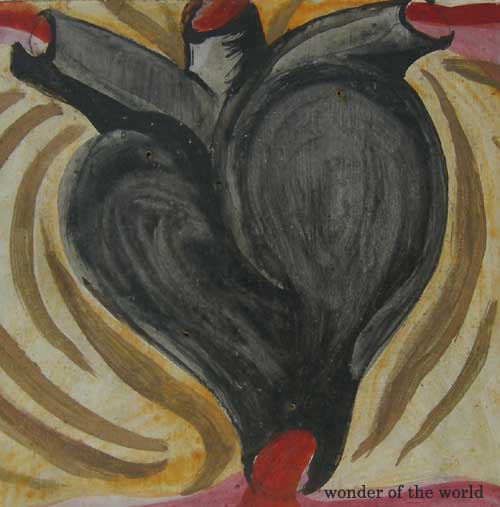
See Susan Dayal's current work
Q.You work with wire, and you create female forms. But you also do commercial work, tell me a bit about that straddling of lines between commercial and art practice.
A. I have been working in wire for about 18 years. I started working in wire in my second year of art school. During that time, I was experimenting with the material and exploring ideas related to feminism, body image, fashion and Carnival. When I graduated and began to try to earn a living with this skill, I began to develop a range of smaller craft items. The first was the little wire angel Christmas tree decoration that I still make today.
SKILL
From the perspective of skill, making craftwork consistently for the past 15 years has been very good for me. The craftwork has provided a strong technical foundation for my artwork. It has without a doubt, provided me with many opportunities and challenges that have helped me to develop my technique and skill level. It has also made me a lighter, less serious person. When I make craft work, I am collaborating with the client and that process has made me more sociable and extroverted.
CONTENT
One disadvantage of devoting more time to craft than to art is that craft does not challenge me mentally and emotionally, the way my artwork does. Through my artwork, I am forced to face and express my shadow side, my introversion and my issues.
Q. You are a professional Yoga instructor, how does this inform your work?
A. I think that the process of becoming a yoga teacher has affected both the skill and content of my work. For my yoga teacher training course, I had to develop a daily breathing / meditation practice as well as a daily posture practice. The practice of breathing and postures breathing has influenced my work. It has made my focus more intense. The level of intricacy of my wirework has increased to the point where it is becoming more challenging to price the work because I spend so many hours on it.
My yoga practice has also influenced the content of my work. Through my earlier work, I wrestled with the issues surrounding women being stereotyped and victimized. Now I am more interested in a more positive perspective of femaleness.
Q. You went to India a few years ago, has that influenced your work?
A. India provided a sensory overload. I’ve spoken to my artist friends who have traveled there and I think that we would all agree that the place continues to have an effect on you many years after the visit.
What I noticed and what inspired and impressed me the most about India was the sense of creativity. First of all, creativity is seen as a divine gift. Musicians, dancers and would imagine that artisans as well regularly give thanks and praise to God and their gurus. Their level of workmanship and commitment to excellence is truly inspiring.

A commissioned Artist book incorporating the work of Dayal made by Bookmann
Q. You studied in Scotland, tell me a bit about your early art learning?
A. When I was deciding on which schools to apply to for my sculpture degree, I looked at a lot of different art schools. I looked at Chelsea School of Art, Central-St. Martins, Kingston University, Glasgow College of Art, Edinburgh College of Art and of course Dundee College of Art and Design. I liked the program at Dundee the best because the program was very well balanced between being structured and allowing students to discover their own voices. I think that a sculpture program has to be structured and directed to a large degree because there are so many processes to learn. However, it also needs to be flexible and accommodating, so that the students can learn how to apply these skills and make images that express their voices and visions.
I think that I received the kind of resource and instruction that I wanted. I was also allowed to be myself, to express my femaleness and Caribbean-ness in a very white, male space. Although I majored in Sculpture, I explored photography a lot too and I enjoyed that.
Q. You studied with Eddie Bowen and Steve Ouditt, what was that like for you?
A. That was a lot of fun. They were both young, in their mid-twenties and very vibrant teachers. They pushed us and encouraged us to explore and push limits. I loved that. They introduced us to other artists like Jackie Hinkson, Shastri Maharaj, Francisco Cabral and Anna Serrao. As teachers, they supported our growth very well.
Q. You did a group show with Irenee Shaw and other regional female artists, tell me about the experience, and don’t you think that we need to have another show like that very soon.
A. Lips Sticks and Marks came about when Irenee had a solo show at CCA in 1998. She invited 2 other artists to speak at her talk, Annalee Davis and Alida Martinez. From their collaboration at the talk, these 3 women artists decided to take things further and expand the idea into a group women’s exhibition, with artists from the region. The show was curated by Irenee, Annalee and Alida and was intended to travel around the Caribbean. They invited Roberta Stoddart from Jamaica, Joscelyn Gardner from Barbados, Osaira Muyale from Aruba and myself to join the group. A catalogue was designed and printed. The show opened in Barbados and then traveled here to Trinidad.
Lips Sticks and Marks was a really wonderful experience for me. I was the youngest of the women, and the least experienced. They were like big sisters to me. It was very ambitious and a massive undertaking. I am very proud to have been a part of that.
What made this show so special, was that it was curated by women artists. It was a spontaneous response to the connections that Irenee, Annalee and Alida felt with each other’s work and the work of the other artists in the show. They had seen parallels and connected themes in the work of all 7 of us. We were working through issues of gender and cultural identity in the Caribbean space.
I would like to see more thoughfully curated exhibitions in Trinidad and perhaps a women’s show could be one of them.
Q. What are some of the misconceptions that people have of your process?
A. People may not realise that wire-bending is very hard on the body. That is one of the reasons I began to practice and then eventually teach Yoga. I have carpal tunnel and at times, excruciating back pain that is a direct result of this work. I am however able to manage my injuries with my yoga practice.
Q. What are you working on now?
A. I am working on a small collection of craft for Christmas.
Q. What would you like to do that you have not had an opportunity to do as yet?
A. I find that technique and content are closely connected. Some techniques lend themselves to expressing certain ideas. For these past 18 years I have been working mostly in wire, though from time to time I experiment with painting, drawing and fabric work. At this point I would like to explore another technique or techniques and devote years to developing my skill level. I think that these new skills will give me the visual language with which I can express different ideas.
Q. Your husband Johnny Stollmeyer has worked with you in a collaborative way, tell me about this melding of natural materials with wire and some of the places you have shown your work together.
A. Soon after we were married in 2000, Johnny and I had a show together at the Gallery 1234 at the Normandie Hotel. We made several collaborative pieces for that show. Since then we have made a handful of collaborative pieces that have been displayed in gift shops like Scribbles in West Mall (which is no longer) and Rainy Days in Ellerslie Plaza. Presently we do not have any of the collaborative pieces available.
Q. There are not many art couples, the Bainey’s, the Cozier’s, these pairings are dynamic, and in every case they manage to be strong together. Have you given any thought to this, and what are your views?
A. Although I enjoy and appreciate the work of the Bainey’s and the work of Irenee Shaw and Chris Cozier, I do not know anything about their working process or working dynamic.
It has taken effort for Johnny and I to be able to collaborate because we have very different creative processes. Generally speaking, artists are single-minded and egotistical. Collaborations, like any other relationship require commitment to the other person, compromise and trust so that creativity and spontaneity can flow. In successful pieces, the aesthetics and visions of the individuals can work together well.
Q. You have made work for Carnival, what was the experience like?
A. In 1996, I made a series of headpieces for Peter Minshall and the Callaloo Company’s production, Song of the Earth. That was a very intense working experience. Minshall was my mentor and I met with him a few times and he would express to me what he wanted through metaphor and simple sketches. Then I would go away and with further direction from Kathryn Chan, I would play, explore and experiment. At some point, I arrived at what was required.
Q. Your women body cages had a visceral impact on the viewer and the wearer that it was built around. Talk about that.
A. Looking at my earliest work from art school, you can see that I am interested in the female torso. Using the forms of structured garments like bras, corsets and girdles as my starting point, I have consistently explored the idea of an empty garment holding the form or describing the shape of the body that inhabits it.
I took that idea further by making corsets from cardboard, wire or mild steel and then taking photos of myself wearing these structures. I was commenting on the torture that is a part of fashion, beauty and body image. In the photos I would wrestle with the costumes. The photos were meant to illustrate the conflicted feelings that I felt towards the stereotypical roles of women and having to dress a certain way in order to get approval from both men and women alike.
The series of 5 torsos that I called She Structures, were a social comment on rape. I was thinking of what kind of garment could protect a woman from rape. I came up with the wire torso with a serrated labia.
Q. Where do you see your work going in the next few years?
A. I would like to explore sheet metal and push that material on its own, independent of wire, and see what happens. I would also like to learn traditional quilting and explore working in fabric as well.
Interview courtesy of Sexypink

Susan Dayal's Heart
1 comment:
Hi, thanks for letting me comment this page ... I love your information and I would drink to more about it
Post a Comment